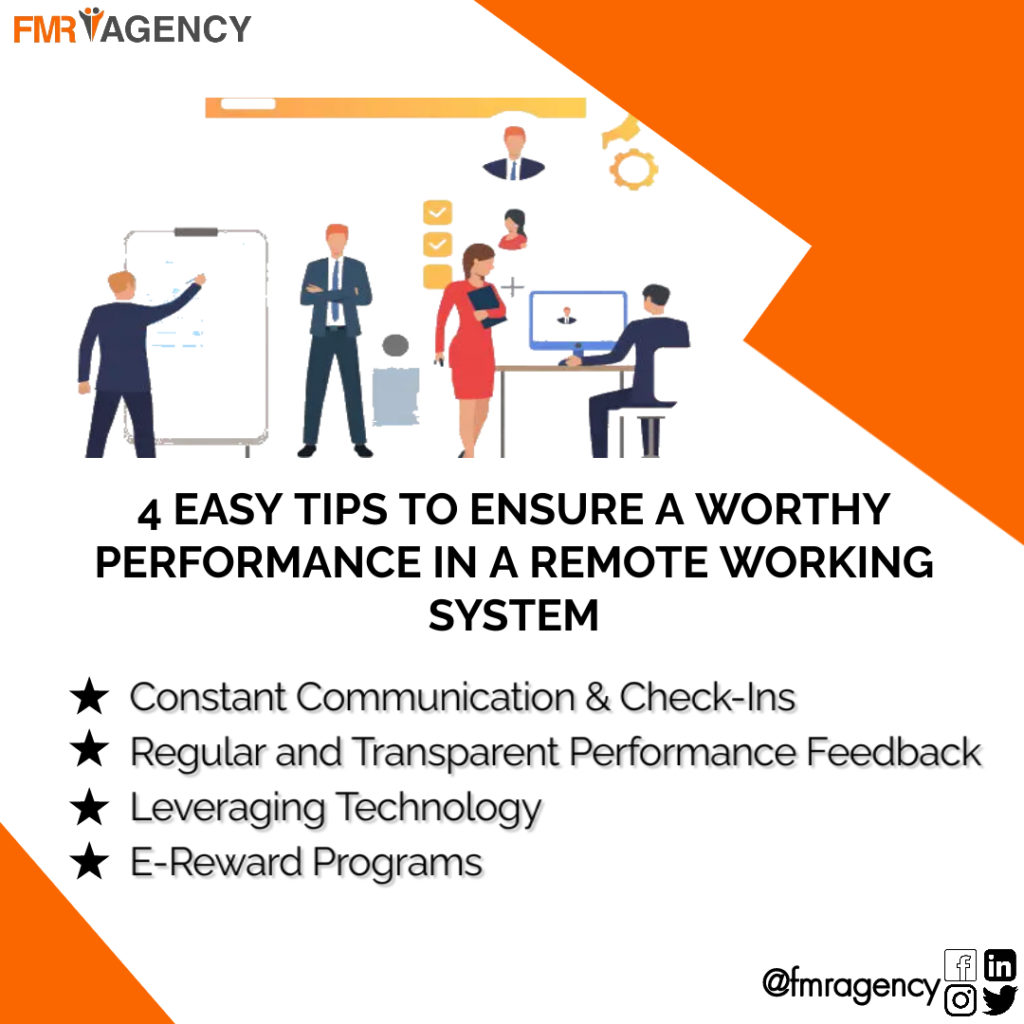Rethinking performance management strategies may prove to be a truly disruptive opportunity for post-COVID-19 growth. This is because the life-threatening crisis is an opportunity to overhaul how we work, rethink where we work, how we manage employees’ performance, and how we can make human talent the company’s most valuable asset. The pandemic has created a new world of work, disrupted how organizations are operating, with many experiencing reduced hours, adjusted goals, furloughs, or even layoffs. In a similar vein, the pandemic has made it quite impossible to separate professional life from personal life, even though it was considered poor work ethics, to bring personal concerns into the workplace. Thereby, leaving managers mystified about how to manage the performance of their employees in this new world of work. What then are the strategies that managers can put in place to manage performance for the post-COVID-19 growth?
- Constant Communication & Check-Ins: In the United States in 2013 a total of 32,719 people died in motor vehicle crashes; 29% of them were speeding-related. A number of solutions were proffered to get motorists to slow down, like stronger law enforcement crackdowns, speed bumps, and rumble strips. One strategy that has gained popularity in the past 10 years is the radar speed sign that gives drivers constant communication on their speed as they approach the sign. This seems like something that couldn’t possibly work— telling people something they already know (distract them with a large sign). The original assumption was that it couldn’t possibly work because people know how fast they are going; they have a speedometer in the car but surprisingly it did work and it is still working (Alan L. Colquitt, 2017). In a similar vein, a major performance management strategy that should be encouraged in the new world of work is constant communication and check-ins. According to Michael Lowe, CEO at CarPassionate, he stated that “working apart from your team is very challenging as you are not sure of their progress, and how things are going”. This means that there is a need for constant communication among employees and the manager to be sure they are on track. (Jake Penney, HR heads, English blind) reported that during the COVID-19 crisis, providing feedback remotely, and ensuring that the right message gets across can be challenging, this is because there’s so little context and tone for such remote interactions.” He recommends speaking often on phone or by video conferencing to personalize feedback and reduce the chances of misunderstandings. Also, given that the performance of the organizational plan is a continuous process, employees need to be reminded constantly about the plan and their respective roles in the organization as a strategic way of keeping the aspirations in view, especially in this new world of work. Clarity must be a priority.
- Regular and Transparent Performance Feedback: During this pandemic period a lot of employees worked under some level of added stress and as the saying goes “When humans are in a state of stress, we don’t behave or react as we normally would” meaning that traditional performance management strategies will be inappropriate for remote work e.g the regular appraisal system, which evaluates the performance of employees once or twice annually. The pandemic has brought about a need for regular performance feedback. This is done in order to know if the goals of employees still align with that of the company. According to a 2019 study conducted by Work human, more than half (55%) of workers stated that annual reviews do not improve their performance. With the massive migration from the office to working from home, there is a constant need for regular performance updates, as this would serve as a key performance indicator to ensuring that remote work yields company growth.
- Leveraging Technology: In 2000, Blockbuster movies were wildly successful and dominated the video market. Their business model focused on brick and mortar stores, physical access to movies, and late fees for revenue. Consequently, in the same year, Netflix CEO Reed Hastings proposed to Blockbuster’s board that Netflix manage their online brand. He was laughed out of the room but today Netflix is booming. Blockbuster suffered from what change experts Stewart Black and Hal Gregersen call a “failure to see” (Alan L. Colquitt, 2017). With the outbreak of the pandemic, it is important to embrace technological solutions. Numerous employees are now turning to information and communication technology to enhance performance tracking and accommodate employees in real-time. The likes of Zoom, Goggle meet, and Microsoft is used by organizations to conduct meetings, training, and also aid communication. Hence, organizations are now advised to invest in training employees on the use of these applications as it would make their work easier in and out of the workstation. Furthermore, if an establishment has a performance management solution with a mobile app or responsive design, managers will easily record conversations on the go with employees, and keep track of goals and progress. This approach simplifies goal management for employees that are working in the field. A practical application is when an organization creates a mobile application that helps employees keep track of conversations in the group even though they all still work from home. This implies that managers can also have direct reports, track conversations, and see how employees are making progress. This would help the organization manage the performance of its employees effectively in this new world of work.
- E-Reward Programs: Companies and agencies have the free hand to decide what e-rewards are best suitable for their workforce and how regular the rewards should be granted.

